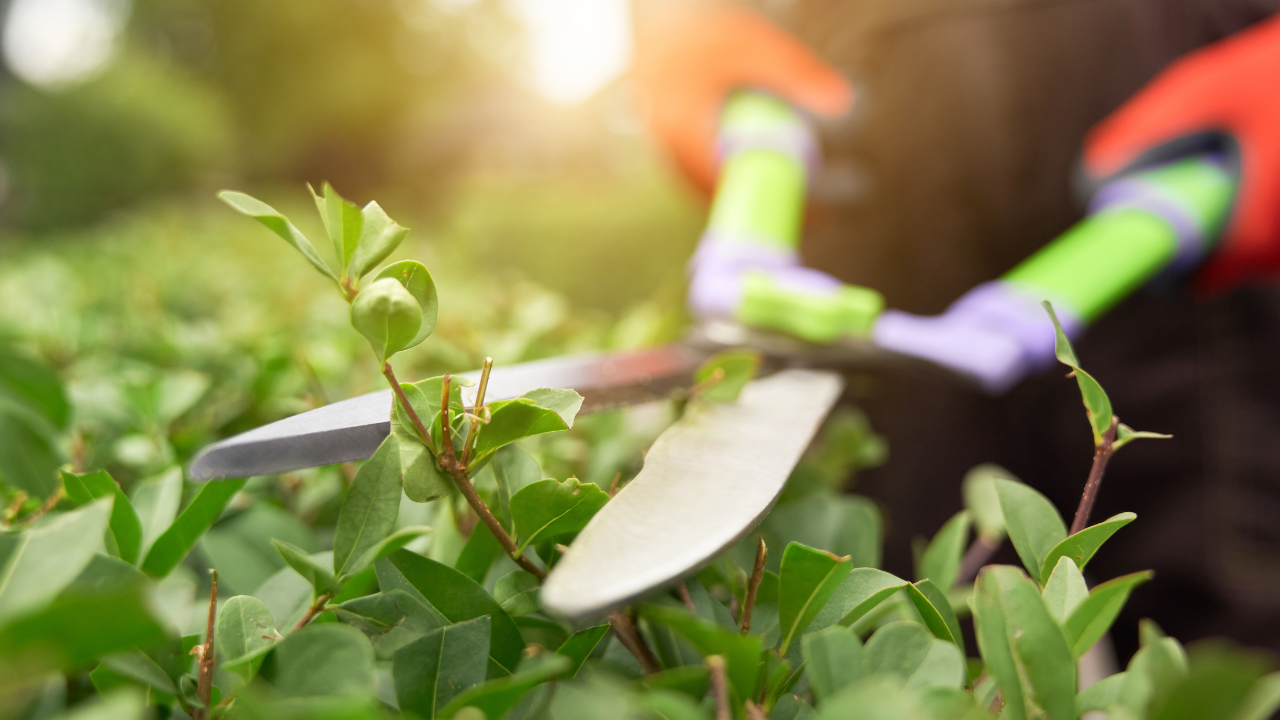Gardening jobs for May: 10 tasks to tick off before summer arrives
Here's what you should do in your garden before temperatures start to rise


Despite April being an extremely wet and dreary month, it doesn't mean we'll start seeing some warmer weather very soon. Whether you're hoping to host family and friends in your garden this summer, or would just like to enjoy it yourself, May is the perfect time to make sure it starts looking its best.
As it's the beginning of the month, it's time for me to share the garden maintenance tasks I'll be completing this month. As usual, I've received some extremely helpful tips from Craig Wilson, Co-founder, Director and in-house gardening expert at Gardeners Dream.
Make sure you check out my gardening jobs for April if you haven't already.
Garden maintenance
1. Prepare your garden furniture
As the weather warms up, now is a good time to start getting your garden furniture ready. Wash down any plastic or glass furniture with warm soapy water to remove any dirt and debris that has collected over the winter and treat any wooden furniture.
This is also a nice time to think about refreshing old wooden furniture, by sanding back and re-staining. If you are particularly creative, you could give it a new lease of life with a fresh coat of paint.
2. Clear weeds and pests regularly
Hoe bare soil and remove weeds in planters and beds regularly to ensure that weeds are not getting enough time to fully establish and set seed. Keeping beds free of weeds is important as not to allow them to steal water and nutrients from your plants.
It is also a good idea to regularly check plants and leaves for the presence of aphids. If you spot them, brush them off or spray them down with soapy water, especially if you want to prevent a large infestation.
Get all the latest news, reviews, deals and buying guides on gorgeous tech, home and active products from the T3 experts
Flowers, plants and shrubs
3. Cut back box hedging
Aim to cut back the stems of young plants in May to encourage new growth, whereas mature plants are best trimmed in August. Shape them how you want them, and they should hold their shape for the year.
4. Plant out Dahlia tubers
Once all risk of frost should be (hopefully) out of the way, mid to late May is a good time to plant out your Dahlia tubers. Remove some shoots before planting into the ground or in a pot, leaving around five remaining. This will help to encourage bushier growth and a plant that provides lots of flowers.
5. Control your climbers
By now, you should have noticed new shoots on your climbing plants such as Wisteria or Clematis. Before they get too long, it's a good idea to start tying them back. Not only will this tame them and keep things looking tidy, but it's a chance for you to manipulate the direction you want them to climb.
6. Start to harden your tender plants
As the temperatures slowly start to rise, May is a good time to start hardening off some of the tender plants that you have been growing indoors, such as Begonias.
Start placing them outdoors during the day, before popping them back inside when the temperature drops in the evening.
Fruit and vegetables
7. Earth up your potatoes
Now that your potato stems are likely to be around 10cm, you should start a process known as ‘earthing up’. This essentially covering as much of the shoot that is above ground with soil to increase the length of the shoot that is below ground, meaning it will bare more potatoes.
8. Harden off outdoor tomatoes and courgettes
Start popping your tomato and courgette seedlings outdoors during the day, and bringing them back inside in the evening. This will harden them off before planting early next month.
9. Remove weeds and pests from your vegetable patch
Whilst many of your fruits and veggies are about to enter the biggest stage of growth, ensure that you remove any weeds. This will ensure there is little to no competition for water and nutrients, and your crop is getting everything it needs.
If you notice any pests, tackle them in advance by hanging pheromone traps in fruit trees such as apple and plum. You could also use mesh to cover soft fruits such as strawberries, which will keep birds from eating your crop.
Lawn care
10. Lower mower blades and feed
In May, you can lower your lawn mower blades back to the regular position for summer cutting. It is also a good time to feed your lawn with a high nitrogen feed, which will encourage lush green growth over the coming months.
Before you go, have you seen these 8 cheap DIY garden projects that will transform your outdoor space?

Lizzie is T3's Home Living Staff Writer, covering the latest in smart home, lifestyle and beauty tech. From skincare gadgets to vacuum cleaners, she's your go-to for trends and top recommendations.
When not writing, Lizzie enjoys mooching around Bath, spending time with loved ones, or testing her review units – often during an enthusiastic cleaning spree!